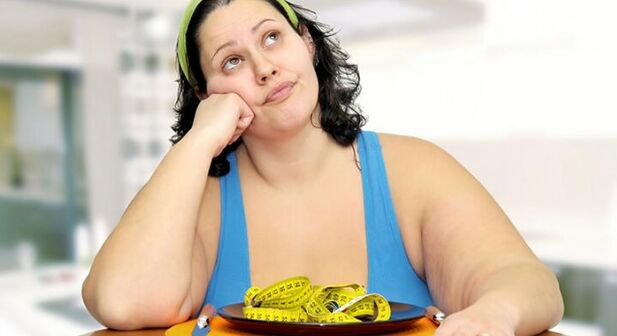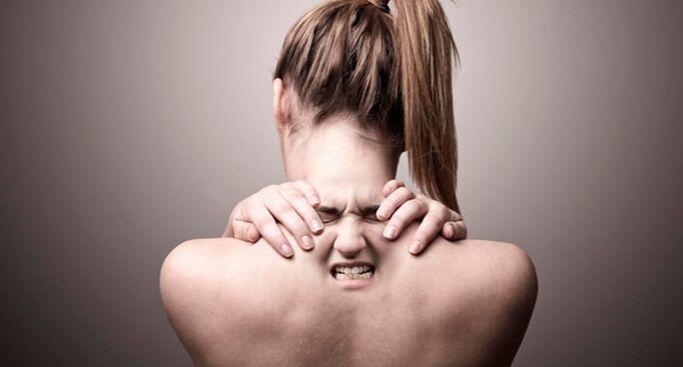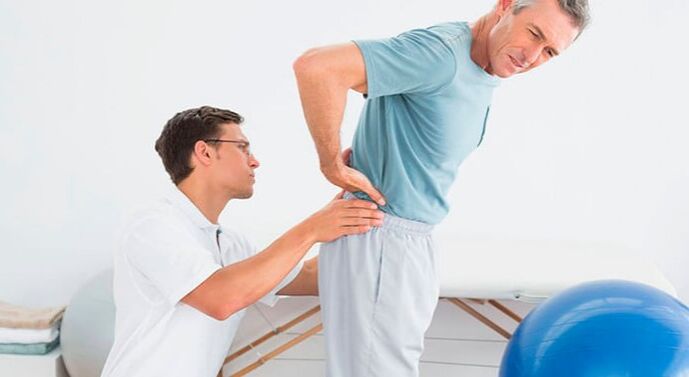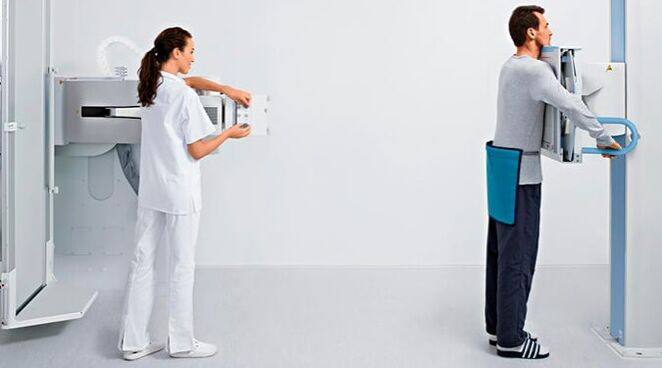Osteochondrosis is a pathology familiar to 40% of the population under the age of 35-40 years and almost 90% in old age. Even in adolescents, signs of osteochondrosis are sometimes revealed - a decrease in the height of the discs, pain, discomfort in the spine. If you start the treatment of the disease at the first stage, before the disk destruction, the chance to stop progression is very high.
What is osteochondrosis?

With osteochondrosis of the spine, one or more intervertebral discs occurs. The disease can occur in any department:
- Thoracic;
- Shein;
- Lumbar (lumbosacral).
In severe cases, the degeneration of vertebrates against the background of osteochondrosis is observed throughout the pillar, which causes human disability. So what is this disease - osteochondrosis? The pathology is associated with a gradual, steady and progressive violation of the nutrition of hyalin cartilage located on the intervertebral discs, as a result of which they change their position, shape, crack. A person experiences a severe pain syndrome, the functions of the entire musculoskeletal system are impaired.
What is osteochondrosis regarding its consequences? If you do not carry out treatment, the vertebrae will be compressed, the cracks between them will decrease, and the discs will seem to crumble. This will lead to damage to the nerve roots, damage to the spinal cord and impaired work of internal organs. Bone osteophytes appear along the edges of the disks - growths that cause even more pain. The consequences of this spinal disease are very serious.
The main causes of osteochondrosis
Scientists came to conclusions, studying osteochondrosis that this disease is a consequence of a person’s straightforwardness, so most people are subject to it. Daily high loads on the spine, age -related deterioration of vascular functions, inferiority of nutrition and aging of the body are the main causes of osteochondrosis. The following factors are weighed down by the situation:
- Frequent improper position of the body (for example, curved sitting at the desk, wearing a bag on the shoulder);
- Sleep on soft mattresses, pillows;
- Flat feet, leg deformation;
- Metabolic diseases;
- Excess weight creating enhanced loads on the vertebral column;
- Hypodynamia;
- Posture disorders;
- Multiple pregnancy;
- Long smoking experience;
- The instability of the vertebrae.

Injuries, heavy physical activity greatly exacerbate the development of osteochondrosis of the spine. Therefore, athletes, employees of physical labor, osteochondrosis of the lower back - a very "popular" problem. Heredity also plays an important role in the pathogenesis of the syndrome - if parents at a young age had serious problems with their backs, the child has a high risk of getting the disease of the spine.
Psychosomatics of osteochondrosis
Psychosomatic causes of pathology are a new direction in the search for prerequisites for its formation. Psychosomatics implies the influence of psychological factors on the development and course of physical disease. The connection between bodily and mental problems is really cramped, and in appearance a healthy person can suffer from regular pain. With osteochondrosis, some people have no objective causes for pathology, but it continues to progress.
Up to 30% of patients after a visit to the doctor indicate such troubles as:
- Constant stress;
- Chronic experiences;
- Nervous overstrain;
- Family problems;
- Conflicts;
- Moral breakdown.
Stages of the disease
The intervertebral disc consists of liquid and solid parts. The first is in the center, representing a core that gives elasticity. The core is surrounded by a strong ring from above. It is with the liquid structure that all pathological changes in the disk begin, which later spread to its shell.
In medicine, four stages of development of osteochondrosis are distinguished. This refers to the conditional unit of pathology by the severity of violations in the spine:

- The first stage of osteochondrosis. The amount of moisture in the disk falls, it is dehydrated. Destruction does not yet occur, but after severe dehydration of the nucleus on the fibrous ring, microcracks begin to appear. Symptoms at this stage of the disease are usually absent.
- The second stage of osteochondrosis. The height of the disk begins to decline, which means the gradual attachment of symptoms and the progression of pathology. In the spine, the distance decreases between its individual segments, which is why the ligaments are sagging. At this stage, in a number of patients, the disease causes a slip of the vertebrae - spondylolistz. Pain, discomfort occur with exacerbations, aching pain can be present even in remission.
- The third stage. Osteochondrosis of the spine at this stage gives a severe pain syndrome, because complications begin to form. Most often, this is a protrusion of the disk, less often - arthrosis (degeneration) of the vertebral joints, subluxation of the vertebrae. The pain is supplemented by a limitation of the mobility of the affected spine segment.
- The fourth stage of osteochondrosis. The spinal column begins to adapt to new conditions of existence, tries to fix the vertebrae in order to protect from final destruction. For this, osteophytes grow. The pain can be harsh due to injury to nerve endings.
Symptoms of osteochondrosis
The first signs of osteochondrosis usually begin at the initial stage when there is no pain yet. In the neck, lower back, less often - in the thoracic region when moving, you can hear a crunch (it means a violation of the power of the disk, its dehydration). Further, during overloads, working in an uncomfortable position, a person can note the stiffness of the muscles of the back or neck. They become "stone" on one or two sides, which is uncomfortable, causes burning, irritation.
Subsequently, symptoms of osteochondrosis become more obvious. At rest, a person can feel normal, but work, lifting weights, a dream on an uncomfortable pillow can provoke such phenomena:
- Aching pains;
- Aches;
- Numbness of the hands (with damage to the neck);
- Feeling of stiffness;
- Forced decrease in movements;
- Muscle spasm;
- Feasts;
- Increased pressure;
- Violation of posture.

When overloading the patient's spine, osteochondrosis gives more pronounced signs and symptoms. The pain occurs in the shoulders, gives it to his hands, elbows, headaches appear. With osteochondrosis of the cervical spine, there is noise in the ears, dizziness, the syndrome of the vertebral artery develops, and vision is disturbed. Over time, no muscle atrophy occurs without treatment of osteochondrosis, the skin becomes pale. The course of heart pathologies may be aggravated, the work of the liver, gall bladder, and gastrointestinal tract is disrupted.
What is the pathology leading to?
The consequences of this disease are always unpleasant, they provoke an increase in pain. With osteochondrosis, there are:
- Disk protrusion;
- Prolapse and hernia of the disk;
- Bouts of radiculitis, Ishias, lumbago;
- Kyphosis, scoliosis.
The danger to a person largely depends on the type of hernia for osteochondrosis of the spine. They are front, rear, side, and the most dangerous are the rear hernias - they can squeeze the spinal cord. In the lumbar segment of the spine, hernias are most common, mainly between 4-5 vertebrae.
Lumbar osteochondrosis can cause very unpleasant symptoms - shelters (lumbago). Lumbago pain is burning, sharp, unbearable, it is very difficult to endure. The cause is pinched the nerve, because the patient is damaged by a neuromusive bundle. Especially dangerous for osteochondrosis of the horse tail syndrome, when a person has a pinching of a large bundle of spinal nerves. As a result, the functions of the intestines, the bladder, can even happen even paralysis of the legs.

Signs of osteochondrosis often come down to severe muscle atrophy. If the muscles do not participate in the body for a long time, the movements of the spine are constrained, then individual fibers weaken. As a result, the patient can become a disabled person chained to bed. Cervical osteochondrosis is also very dangerous, because a hernia in this segment can cause a violation of blood supply to the brain. At this stage there is a risk of visual impairment, swallowing, speech and other brain functions.
Diagnosis of the disease
By independently recognizing the signs of osteochondrosis, you need to think about its treatment. Since the lesion of the spine can reach different stages, the treatment of osteochondrosis will also be unequal. It is important to make the correct diagnosis so that therapy is selected correctly.
Due to the widespread prevalence of the disease and the presence of characteristic symptoms, the doctor will be able to assume a diagnosis at a preliminary examination. But for the differentiation of osteochondrosis from other diseases of the back and internal organs, the following diagnosis is performed:
- X -ray of the spine. It will help to identify the height of the discs, the degree of their thinning, as well as the presence of osteophytes.
- CT, MRI. More preferable in the examination. With this disease, the severity of the damage to the nerves, soft tissues, and find the smallest protrusions will allow to determine.
With osteochondrosis, laboratory tests do not play a paramount role, but the delivery of general analysis, biochemistry is required to exclude the inflammatory process, rheumatoid lesions of bones, joints. To study the muscle function, the doctor conducts a number of physical tests, and to clarify the work of blood vessels and nerves, they make a duplex, electromyography.
Treatment of osteochondrosis medicines
If with osteochondrosis symptoms and treatment are determined, it is not worth delaying with therapy - the disease progresses rapidly. At an early stage, gymnastics is usually recommended, massage to strengthen muscles - this will be enough. At the remaining stages of osteochondrosis, drug treatment will be needed, and sometimes surgery.
Reliefing the pain is the most unpleasant sign of the disease - you can use non -steroidal anti -inflammatory drugs. They cannot cure osteochondrosis, but they are always prescribed before the exercise therapy to relieve symptoms. In severe cases, the drugs are administered in injections, but more often they are recommended by a course of 7-14 days in tablets and locally, in the form of ointments.
If a person has a strong painful syndrome in the spine, he is injected with glucocorticosteroid injections directly into the damage zone.
Treatment of osteochondrosis is also carried out using the following means:
- B vitamins of B. help improve the nervous conductivity of the spine.
- Chondroprotectors. They nourish intervertebral cartilage, strengthen discs.
- Musorelaxants. Reduce the strength of muscle cramps for osteochondrosis.
- Vascular drugs. Optimize blood circulation in the spine.
If osteochondrosis has developed, then only Chondroproprotectors give anesthesia and pathogenetic treatment, they are taken in courses for 3-6 months. The rest of the drugs bear the symptomatic effect and do not affect the course of osteochondrosis itself.
Physiotherapy and osteochondrosis

In the list of measures than to treat osteochondrosis, physiotherapeutic techniques necessarily include. Thanks to physiotherapy, the treatment of osteochondrosis will be more effective, because the action extends directly to the focus of inflammation. Physiotherapy will relieve painful syndrome, eliminate spasms, improve blood microcirculation, help remove clips from the nerves. The most popular methods are as follows:
- Electrophoresis. Treatment of osteochondrosis in this way will allow to deliver relaxing, anti -inflammatory substances and anesthetics directly into the zone of vertebrae, muscles, ligaments.
- Ultrasound. Relieves unpleasant symptoms, anesthesia, creates the effect of vibration massage, activates the metabolism at the local level.
- Magnetotherapy. Varias or constant magnetic fields eliminate the inflammatory process.
All types of physiotherapy should be carried out by courses of 10-15 procedures, while individual contraindications are necessarily taken into account.
Gymnastics and massage
Exercise therapy in the treatment of osteochondrosis plays a dominant role. Without exercise therapy, it will not be possible to form a strong muscle corset, and the latter is acutely necessary to maintain a sick spine. Also, gymnastics enhances blood circulation in the vertebral zone, improves metabolic processes and helps to quickly remove decay products.
How to cure osteochondrosis with gymnastics? The complex is selected only individually, and only at 1-2 stages it can be carried out without a doctor’s control. In the later stages, unnecessary, stronger movements can cause a disc dispers and strengthen the problem. At 3 stages, all exercises are done only in a lying position.
For the treatment of osteochondrosis, massage is required. In the acute stage, they do not do it - this will cause a thrill. But the correctly performed massage in the chronic stage with osteochondrosis is indispensable. After the course of the sessions, the muscles relax, the clamps are removed, nerves and blood vessels begin to function normally. Massage is carried out only in gentle mode, without sudden movements.

Pathology prevention
In order not to bring to surgery for osteochondrosis, it is important to carefully consider prevention measures:
- Do not allow hypodynamia. This disease can progress with power loads, but swimming, skis, charging will only benefit and help strengthen muscles and health as a whole.
- Follow the posture. At work and at home, it is important to sit correctly, not to hunch, and from childhood.
- Sleep on comfortable pillows. There are preventive pillows, with existing osteochondrosis, several other, therapeutic ones are used.
- Do not lift weights. If necessary, you should sit down, get up with the object, holding your back straight.
- Regularly do classes to strengthen muscles. This is important for the muscles of the neck, back, press, lower back.
- Wear comfortable shoes. Orthopedic shoes will not allow the factor of risk to defeat the vertebrae.
It is also important to eat well, not smoke, enrich the diet with vitamins, consume more fluids - so the probability of pathology will decrease.






















